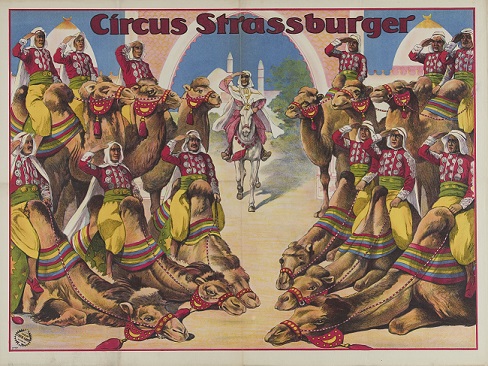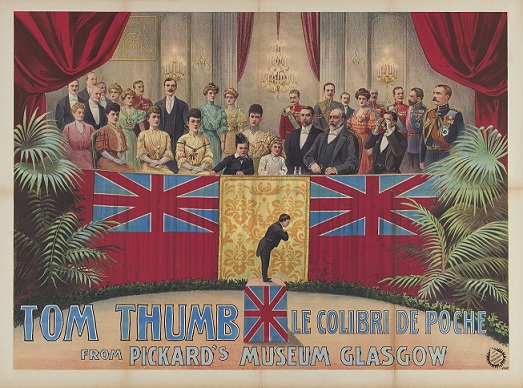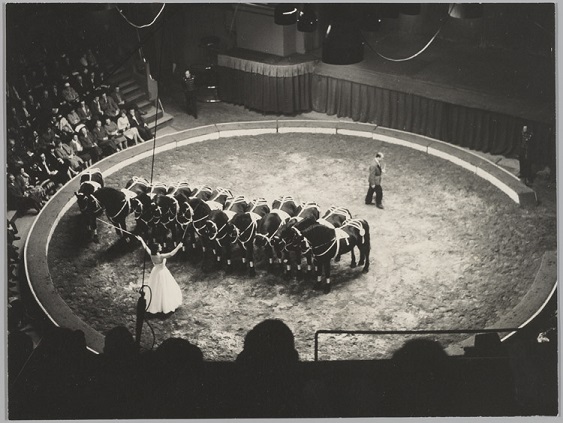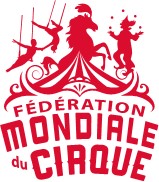CIRCUS HERITAGE IN THE NETHERLANDS
By Willem Rodenhuis, former Curator for the Performing Arts and Media at the Special Collections Department University of Amsterdam.
1964 the Library of the University of Amsterdam obtained as a bequest the renowned circus collection of K.D. (Kees) Hartmans. For future maintenance of the collection and acquisitions Hartmans added the amount of Dfl 10.000 (about € 4500), in those days a considerable sum of money, enabling the Libray to keep in line with new publications in the field of circus over the years, up to the present day. Most of the Hartmans collection consisted of books, covering the wide range of literature on the circus, with a special focus on children’s books . Later smaller, but fine collections were added, like the one of impresario and circus author Jo van Doveren , horse trainer Bob Schelfhout and miscellaneous items by divers collectors of circus memorabilia. Library staff member Marja Keyser edited a catalogue of the Hartmans collection, published in 1968. Moreover, Raymond Toole Stott published his outstanding five volume circus bibliography Circus and Allied Arts (1958-1971), dedicating its fourth volume to the Amsterdam Hartmans collection. By doing so the collection could be researched and play a role in providing illustrations for book and magazine publications, exhibitions, footage for documentaries, TV-shows and BA and MA papers by students. This situation was a kind of status quo till the year 2000, also the year of retirement of Marja Keyser. The Amsterdam Libray Staff decided on this occasion to restrict to the acquisition of newly published books , focusing on literature in the field of history, sociology, anthropology, psychology, art history and the like. This choice for acquisition implied a support for the research/scientific character of the literature to be added to the circus collection. This selection was motivated by the specific needs for staff members and students at the University of Amsterdam. However, in the new millennium digitization became an issue as well, and the Royal Library of the Netherlands played a vital role to encourage the digitization of the Amsterdam circus collection. This wish was motivated by the unique character of the materials, the colourful and appealing illustrations, but also the vulnerable status of the paper material played a role. Still, technological shortcomings in the realm of digitization caused some delay in the process of handling, like not yet existing machinery or lenses to deal with XXXL formats. By 2008 these issues got solved with the availability of relevant equipment fit for digitization. The archiving and storage of the items took some four years in total, after which the digitization of all of the items could take shape. The budget for this project required about € 600.000, and most of this amount was covered by a national subvention for the conservation of culltural printed heritage Metamorfoze . By the end 2016 the project could be concluded, safeguarding the vulnarable items in a digital realm for the future.

Circuscollection Special Collections Department University of Amsterdam
In between, however, the Theater Institituut Nederland ( TIN, Theatre Museum of the Netherlands) was forced to close its doors as a result of strict and severe budget cuttings in the culturaL sector since 2012, as an effect of the EURO crisis. Fortunately the University of Amsterdam / Special Collections Department saw a possibility to integrate the TIN holdings in its existing collection, which meant for the field of circus a considerable extension . Renowned TIN collections like Herman Linssen (books, periodicals, photos, programs), photographers Heinz Baudert and Maria Austria and the circus Kavaljos now became part of the holdings of the Special Collections Department. This input stimulated once again the research and (digital) presentation of the Amsterdam circus collection. End of 2016 the Jaap Best collection, appreciated for its almost complete series of Friedländer posters, was transferred from Telylers Museum (Haarlem) to the holdings of the University of Amsterdam as well. As a result of this the collection of the University of Amsterdam ranks among the prominent collections in the field of circus, and meets the standards of institutions like the Bibliothèque Nationale de France (BNF- Paris), the Victoria and Albert Museum (V & A- London), the John and Mabel Ringling Museum of Art (Sarasota FL) and the Harvard Theatre Collection (Cambridge MA), just to name a few.

Circuscollection Special Collections Department University of Amsterdam
In the past decades the interest for the circus on an academic level has increased. Traditionnaly historians showed from time to time attention for the circus, mainly focussing on specific companies, circus families, or a regional variation in the genre. Ego documents, (auto) biographies of circus artists or entrepreneurs were produced as well. Despite its large and broad audience and the evident popularity among all ages and social classes the circus as a phenomenon scarcely obtained the academic attention it should deserve, comparing it for instance with other genres of the performing arts (music, theatre, dance) or other forms of public entertainment. Since the seventies, however, this point of view has shifted, and nowadays a full range of academics of all disciplines has researched and published about the circus. The UNESCO recognition of the circus as a form of immaterial cultural heritage can be seen as a convincing illustration of this process. Another aspect when explaining the aroused interest in the circus by academics is the system of the circus itself, uniting vital elements of our basic human emotions like fear, survival, admiration, discipline, humour and self esteem. The circus brings these notions together, and they are applicable both for the performing artists as for the audience. From the academic point of view the circus offers a rich source for research into the deep motives and structure of each personal role or position in society, a challenge for everyone in the audience, whether conscious of this or subconscious.
The Fédération Mondiale du Cirque offers a platform directed by Rodney Huey for academics by organizing seminars and inviting researchers to keep in contact with the federation as such. The Federation’s website offers a world wide overview of those active in the field of circus research. Of course, more can be done, but the structure is at least there and is apt to keep things going. Scholars like Peta Tait, Paul Bouissac and Helen Stoddart have already delivered well acclaimed publications on the unique character of the circus, seen from the point of view of semiotics, culture studies or even philosophical notions. And even more important is the fact that the questions put forward and explained in the treatises are based in the day to day practice of the circus life. Those researchers who have access to digital resources like Muse, J Stor and the like will be surprised to see how much already has been published about the circus, the performing artists, the audience, combined with explanations of the ongoing fascination for the demonstrated skills.
The Amsterdam Circus collection is retrievable through the platform www.circusmuseum.nl, as initially developed for the Jaap Best collection. In near future (i.e. in the course of 2018) the other two elements (Hartmans and TIN) are to be integrated into the device. By doing so all of the items will be available for all those, wherever they are, interested in the circus. After this fusion the Special Collections Department has to decide how to move on on a global level: staying as a stand alone platform, or seek the integration in larger structrures like the european project for the digital presentation of cultural heritage Europeana, or the initiative as taken by the Library of Congress The World Digital Library (WDL).

(Piste Carré) : Photo: Heinz Baudert / Circuscollection Special Collections Department University of Amsterdam
Since Philip Astley’s first successes and striving for the modern circus in 1768 we all have embraced the circus and 250 years have passed , up to the present day. The future will bring us other forms, new techniques, challenges, disappointments and inspiration for new discoveries. Archiving what has been produced in the circus plays a vital role in this process, and is often forgotten as the present day is so demanding. However, the digital era offers a fruitful and promising possibility to fascilitate those artists and researchers who are seeking inspiration in the achievements of their colleagues in the past. That’s why archives and libraries foster their collections and why their staff members seek bonds with those who are active in the practice of their trade and skill, whether the circus or something other field of interest is at stake. This unique possibility for research and cooperation should be recognized and cherished more. The active memory of the past helps to give shape to the future, and that is exactly what the circus deserves for the decades to come.
Literature
· Toole-Stott, Raymond, Circus and Allied Arts: a World Bibliography, 5 vol., Derby 1958 -1971
· Keyser, Marja, Catalogus van de Circus-Bibliotheek nagelaten door K.D. Hartmans, Amsterdam 1968
Vrieling, Dick H., The Best of Best; the Unique Circus Collection of Jaap Best, Amsterdam 2017

